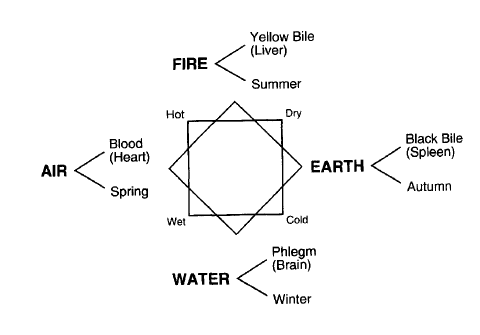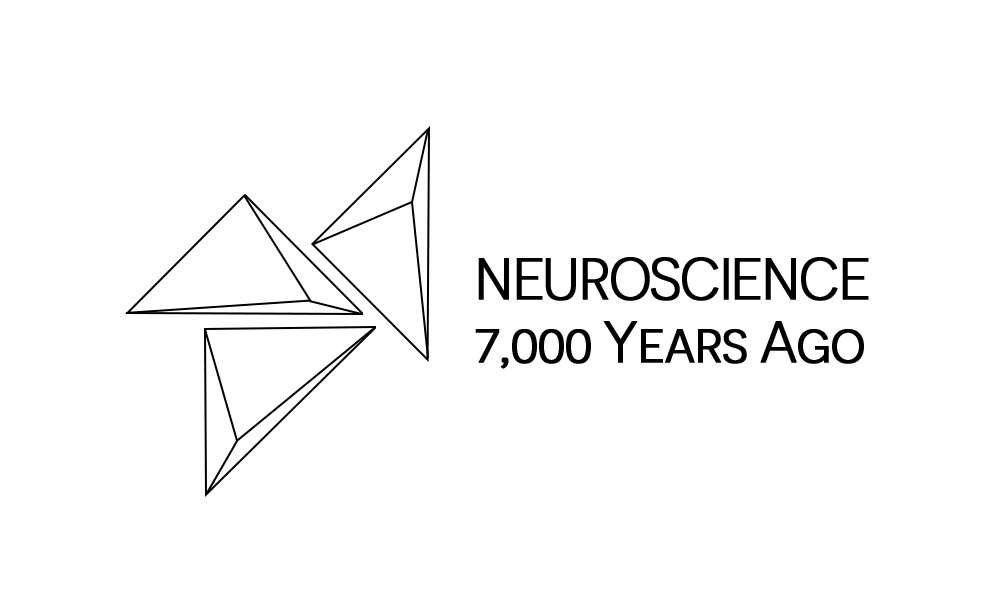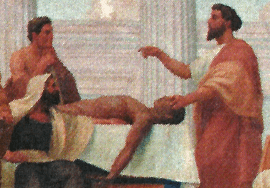
The Humoral Theory
During the Golden Age of Greece, each of the original four elements became associated
with two qualities Figure 1, as the following:
- Air as hot and moist
- Fire as hot and dry
- Water as cold and moist
- Earth as cold and dry
In addition, each element was linked to a specific bodily fluid called a humor. These pairings also took place gradually, but within the later Hippocratic writings found:
- Air with blood
- Fire paired with yellow bile
- Water with phlegm
- Earth with black bile
Nowadays, black bile is the only humor not recognized as a physiological fluid. Most likely, the Greeks observed the darkening of certain bodily fluids in states of disease, and concluded that there must be a dark, turgid humor [1].
Each of the four humors would next be associated to a specific internal organ:
- Blood with the heart
- Yellow bile with the liver,
- Phlegm with the brain
- Black bile with the spleen
The elements, the humors, and the organs would also be linked to the seasons in an almost unlimited expansion of this system, which was based on two pairs of opposites. Seen through Pythagorean eyes, health, or eucrasia (In ancient medicine, a condition of harmony or balance among the basic components or humour, also means normal health conditions), would signify a harmonious balance among the humors, whereas illness, or dyscrasia, would reflect a fault with the mixture and a loss of needed balance. In some cases, the source of the dyscrasia would be immediately apparent. The yellowing of jaundice, for example, would reflect too much yellow bile, whereas looking flushed or having bloodshot eyes would signify too much blood. The basic idea was to restore the

balance by treating with opposites, such as bloodletting in cases showing flushing.
References:
1 Finger, S.: ‘Minds behind the brain: A history of the pioneers and their discoveries’ (Oxford University Press, 2004. 2004)








